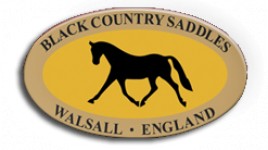Posted: 4th March 2014 | Back to news feed

When it comes to riding across country, whether as part of an eventing competition or having a go at hunter trialling making sure both you and your horse are comfortable is key to success. Here Rob Cullen of Black Country Saddles provides advice on what to look out for.
FOR the sport of eventing there are times when it is more expensive than other disciplines in relation to tack and equipment.
Ideally, most riders would prefer to have specialist saddles and bridles for each phase. Such an investment may be beyond the means of riders starting out at unaffiliated level or the lower stages of affiliated level with most having to compromise and use one saddle in the initial stages, then as riders’ progress, extend their range of saddles further.
When the budget is limited, what are the best options?
Explains Rob: “The main issue for all riders should be to buy the very best they can realistically afford. Buying inferior ‘cheap’ saddles that may involve poor quality materials and low standards of craftsmanship could impact on welfare, safety, comfort and performance.
“If your budget extends to two specialist saddles then for eventing most riders will opt for a dressage saddle and a jumping saddle. The jumping saddle is where decisions need to be made because the saddle that will best assist the rider in the show jumping phase may not beabsolutely identical to the one that would be most helpful across country.
“Because they afford the rider manoeuvrability, close contact saddles are by far the most popular with the show jumping fraternity. The cross country rider also needs ‘space’ in order to adapt their position if something goes slightly wrong. Because of the diversity of the fences, the rider also adapts his position far more across country than in the show jumping arena. Riding across country, most riders prefer a saddle that incorporates some form of knee roll that adds to their security – and it is also important to consider the shape of the saddle if the rider intends to add an overgirth.
“Riders starting to event at riding or pony club level will usually choose to use their existing saddle, probably a GP of some type. ‘GP’, ‘Event’ and ‘All-purpose’ are among the names given to saddles designed to cope with more than one discipline. In recent years, a lot of research and development, often working with elite riders, has gone into the design of such saddles. However, they all involve compromise because no one saddle can perfectly fulfil the needs of two different disciplines.”
Saddle Checks
Horses change considerably over time. A horse’s ‘shape’ is very dependent on the horse owner’s management.
A horse can change shape for many reasons. Maybe he is enjoying a break from work turned out in a field with lots of grass. Possibly, the competition season is well under way and he is leaner and more muscled than he was at the beginning of the season. Maybe he is a young horse and he is going through a period of rapid growth and development. Maybe his owner, school over for the summer, has vastly increased his exercise and schooling programme. Or perhaps he has lost condition over winter.
It’s surprising how many owners notice a rug getting tighter but the fact that the saddle no longer fits well completely escapes them. This is why it is very important to get saddles checked regularly.
Saddle fitting checks are an important part of horse care. Yes, they cost money. And yes, occasionally the saddle fitter may need to return quite quickly because the horse has changed shape so rapidly. This isn’t an unnecessaryexpense it is vital to make sure your horse is comfortable.
For more information or help with buying a new saddle contact Black Country Saddles on 01543 578 243 or visit www.blackcountrysaddles.com
The Equestrian Index newsfeed is compiled from articles submitted by advertising members and expresses the opinions of those members. Watsons Directories Ltd shall not be held liable for any inaccuracies or mis-statements therein.